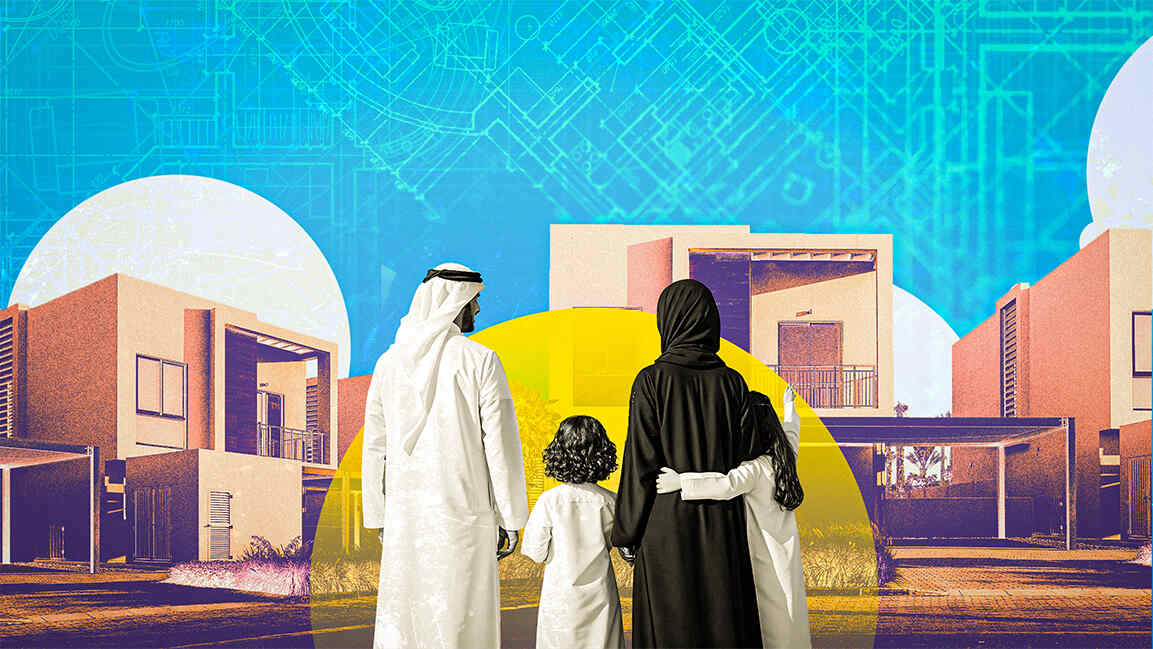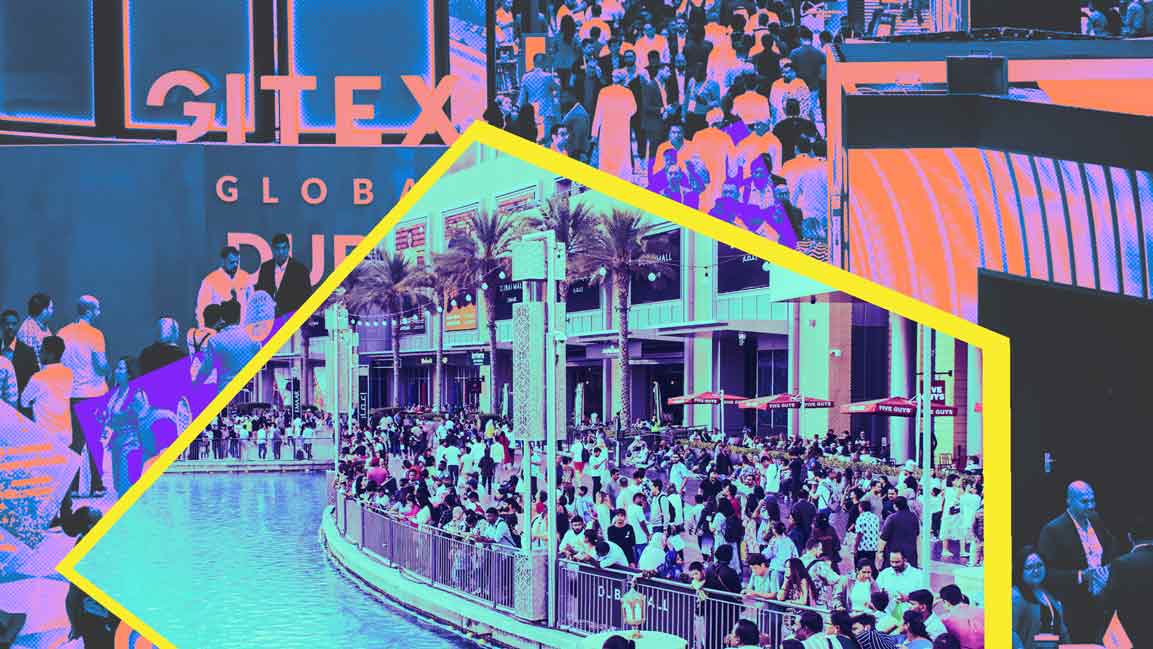- | 9:00 am
Is ‘Home First’ Dubai’s boldest smart city experiment?
A family-first plan with world-changing potential

Last month, Dubai unveiled the Home First initiative. A thoughtful, progressive policy to enable multigenerational living and improve the overall quality of life. But urban futurists see something far more significant: a foundation for what could become one of the world’s most sophisticated smart city experiments.
Although not explicitly branded as an AI-driven project, Home First—beneath its family-centric framing—may ultimately go beyond housing, laying the groundwork for AI-optimized communities, net-zero living, and hyper-connected neighborhoods.
Could it be a model for the future of urban life?
NOT JUST A MODEL
Faisal Rashid, Senior Director at The Dubai Supreme Council of Energy, sees it evolving into a model for future cities where housing, energy, transportation, and digital services are seamlessly integrated. “This presents Dubai with a unique opportunity to set the standard in creating cities that are smart, sustainable, and deeply connected to people’s lives.”
For Carlos Sentís, CEO of WIA Improve X Consulting and Global Innovation Fund Secretariat Member at the World Humanitarian Forum, this concept could extend beyond homes, reaching offices, schools, universities, hospitals, and entire cities—both within the UAE and globally. “The rigidity in housing and real estate policies worldwide leads to inefficiencies and social inequalities that a flexible approach could help resolve.” Addressing the global housing crisis, he notes that the World Bank estimates a $16 trillion gap in housing investment worldwide. An additional 210 million housing units will be needed by 2030 to meet the demands of growing urban populations.
He continues, “Unlike the Home First initiative, families that could share a home often rent multiple houses even before new generations marry, creating socioeconomic divides. This mismatch between rigid housing stock and evolving needs affects billions worldwide.”
Disruption and the acceleration of transformation of lives, jobs, markets, and most institutional systems will inevitably generate the need for changes, to add or reduce space. Allowing citizens to have a framework to adapt is critical. Modular houses, offices, pods, and 3D-printed solutions enable anyone to add, customize, or modify existing spaces to enhance living and leverage existing spaces.
Sentís emphasizes, “Humans are inherently multidisciplinary, and our living spaces are more than just homes—they are places where we work, innovate, and evolve. Life circumstances change—whether due to geopolitical shifts, health issues, or business opportunities—and being unable to adapt to these changes can have significant consequences for individuals, businesses, and economies.”
AN AMBITIOUS VERSION
H.E. Dr. Aisha Bin Bishr, Global Digital Transformation Expert, Strategic Leader in Smart City Initiatives, says that as one of several forward-focused initiatives transforming Dubai’s urban landscape, Home First marks a significant shift in how regulatory frameworks can evolve from static controls into dynamic instruments of city innovation.. “It redefines housing policy not as an end goal, but as a strategic entry point into creating adaptive, human-centric communities.”
By embedding flexibility, multigenerational living options, and space efficiency, these revisions reflect a new design philosophy—one that aligns with Dubai’s broader ambition to engineer communities that are socially cohesive, culturally rooted, and future-ready.
Rashid envisions a net-zero community within a decade. He describes it as a “highly tech-enabled neighborhood where each home produces its own clean energy through energy efficiency and solar, every service is supported by AI, and the entire community runs smoothly using digital systems.”
A community that is sustainable, adaptable, and prepared for the future.
Sentís takes this vision even further, suggesting that if Home First reaches its full potential, it would fundamentally transform how we conceptualize and utilize space while influencing policy worldwide to make space and urban planning as flexible as the post-AGI world demands.
He says, “This initiative can evolve into groundbreaking new models, creating the world’s first physical Decentralized Autonomous Organizations, hybrid spaces for public-private-social engagement, communities with legacy buildings and tourism-attraction art installations, spaces for innovation, and more.”
He imagines a future where flexible, mechanically automated systems could instantly transform any space to serve virtually any purpose, granting unprecedented flexibility across terrains and buildings.
“This approach would dramatically accelerate development cycles. With rapid feedback loops enabling continuous testing and refinement, we could iterate on spatial design in real-time rather than being locked into rigid, permanent structures,” he explains. “The current model—committing to unchangeable structures before market validation—would be replaced by a paradigm of intelligent flexibility.”
THE PURPOSE: RESHAPING LIVES
For Sentís, the initiative holds the potential to significantly improve family relationships by offering greater comfort and personal space. It provides room for fitness, play, study, or work—customizable spaces to suit individual needs. “This flexibility creates opportunities for citizens to tailor their living environments to their unique needs, strengthening community bonds through shared spaces and adaptable common areas.”Beyond personal living spaces, it could also revolutionize the delivery of government services.
Instead of citizens traveling to centralized government offices, modular service points could be integrated directly into communities. Combining digital interfaces with flexible physical spaces, these hybrid service models would allow residents to access essential services in their neighborhoods, making governance more accessible, efficient, and responsive to local needs.
Dr. Aisha Bin Bishr sees a critical opportunity to connect these planning revisions with digital foresight.
“The real chance now lies in bridging these planning revisions with digital foresight—integrating AI, data intelligence, and predictive urban modeling directly into the regulatory process. Cities of the future won’t be shaped by technology alone, but by how effectively we embed smart thinking into the foundations of governance and development.”
AI-DRIVEN URBAN PLANNING AND NET-ZERO HOUSING
According to Rashid, integrating AI and data from the outset enables smarter urban planning. “From optimizing traffic flow to determining ideal locations for schools and using resources more efficiently, it empowers us to build communities truly designed around how people live.”
AI and data-driven urban planning also have the potential to drastically reduce waste in city development, points out Sentís. Digital Twin simulations allow for scenario testing before construction begins, while Generative Design identifies the most optimal solutions through expanded allocation possibilities. Predictive analysis, scenario planning, cost minimization, and usage maximization contribute to more effective urban design.
Sentís emphasizes the importance of a data-driven, holistic approach to urban development, noting that suboptimal infrastructure planning can have long-term detrimental effects on quality of life. As change accelerates, relying on outdated models is no longer sufficient. Innovations like AI-driven tools AlphaFold and Gnome, which have compressed decades of research into months, alongside advancements in digital twins and autonomous vehicles, such as China’s driverless highways, highlight the efficiency gains possible through these technologies.
Moreover, if public housing can be sustainable, efficient, and affordable, it sets a new industry standard. Rashid says, “It shows the market that this is not only possible but necessary, encouraging a broader shift toward energy-efficient, low-carbon development.”
Net-zero goals have been a central element of the UAE’s strategy for years, deeply embedded in its innovation, governance, policy, and planning frameworks. This initiative, Sentis says, represents another significant step in that direction, applying pressure to the private sector, which is now fully aware of the expectations.
THE FUTURE EMIRATI ASPIRATION
Sentís highlights that this initiative has the potential to fundamentally reshape the mindset of the next generation of Emiratis. “Growing up in flexible, adaptable environments will nurture a generation that sees possibilities rather than limitations. They will develop an inherent understanding that spaces, like ideas, can evolve and transform to meet changing needs.”
Young Emiratis will likely cultivate a stronger entrepreneurial mindset as they witness physical environments adapting to support new ventures. This flexibility will foster innovative career paths and business models, encouraging creativity and problem-solving. As modular, adaptable living becomes the norm, sustainability will likely become a core value, emphasizing adaptation and reuse over demolition. The initiative will also strengthen community bonds, with shared spaces promoting deeper connections and a stronger national identity.
Rashid also believes this initiative will help shape a new mindset. Growing up in smart, green communities will make sustainability and innovation second nature. “It will inspire young Emiratis to embrace a future where technology, culture, and environmental responsibility go hand in hand,” says Rashid.
HOME FIRST AS A GLOBAL SMART CITY MODEL
Working backward from an ambitious vision—prioritizing advanced education, business growth, citizen well-being, and smart infrastructure—is how every nation should operate. The stakes couldn’t be higher: by 2050, an estimated 3 billion people will require housing, demanding over $100 trillion in investment. With affordability in crisis and wages stagnating, initiatives that promote family-centric living and smarter use of space are no longer optional—they’re essential.
From real estate adaptability and infrastructure efficiency to urban planning models that prioritize sustainability and community well-being, the initiative could set new international benchmarks.
Sentis adds, “It is important for the UAE to use its innovative drive to tackle problems from which the world can benefit. The country has the opportunity to provide answers to critical questions like the balance between security, freedom, and privacy in smart cities.”
That balance is increasingly critical in a world where smart infrastructure depends on large-scale data collection. The UAE can lead global efforts to prevent dystopian outcomes from emerging technologies by piloting responsible solutions and regulatory frameworks. The focus, Sentís says, must shift toward long-term, human-centric innovation—prioritizing life, health, and societal well-being to ensure that cities evolve for the benefit of all.
If executed efficiently, Home First could show the world how to build inclusive, affordable, sustainable, smart cities. Rashid sees Dubai’s opportunity to set a global benchmark—not only in low energy intensity and rapid urban innovation but also in showing how modern cities can be built quickly and responsibly, with people at the center.






































